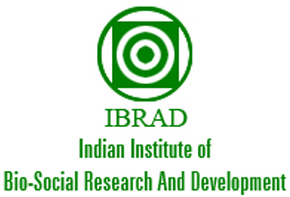Non-Timber Forest Produce (NTFP), Value Addition, and Marketing
Non-Timber Forest Products (NTFPs) are any products other than timber that is produced in forests and can be harvested for human use without cutting down trees. They include fruits and nuts, vegetables, fish and game, medicinal plants, resins, essences, and a range of barks and fibers such as bamboo, rattans, and a host of other palms and grasses. NTFPs grow naturally in forests, and simply need to be harvested or gathered from their environment.
Importance of Non-Timber Forest Produce (NTFP)
- More than three-fourths of the populationsin such countries are found as dependent on NTFPs for their nutrition and primary health. Traditional forest dwellers are completely dependent on NTFPs for their basic amenities like food, shelter, and medicine. Thus, for the improvement of rural livelihood and well-being of the community the contributions of NTFPs are immense.
- NTFPs play an important role insupporting the livelihoods of millions of forest fringe people and therefore provide an important safety net for households throughout the year, particularly during the lean season
- Although NTFPs may not be the only source of income for local people living close to the forests, they contribute significantly to household income, food security, and household healthcareas well as, provision of multiple social and cultural values. In a study conducted by IBRAD in Jamboni Range of West Bengal way back in 1991 revealed that NTFPs contribute to 1/3rd of the household income of the forest fringe villagers.
- NTFPs are used and managed in complex socio-economic and ecological environments.In traditional forest communities, many NTFPs may be used for subsistence while others are the main or only source of income. Some NTFPs have significant cultural value, as totems, incense, and other ritual items. Others have important medicinal value and contribute to the community’s health and well-being.
- Wild edible foods are rich in vitamins, protein, fat, sugars and mineralsand depending upon their availability can be used in different seasons throughout the year.
- NTFPs also contributes to the soil and landscape conservation and providing habitats for many wild faunas.Maintaining microclimate, the important habitat for microorganisms by NTFPs have often been witnessed to maintain ecosystem stable. Due to their enormous role in forest ecosystems, they are also called as minor forest.
Challenges and opportunities for sustainable management of the NTFPs for sustainable livelihood of the people through processing, value addition and marketing
Habitat loss and fragmentation of forest areas due to land use changes causes degradation of forest and its associated NTFPs, many of which are becoming Rare, Endangered and Threatened.
NTFPs are used for commercial purposes by corporates and business houses for various purposes. But the benefits are limited to the local people whose role are mostly confined as the primary collectors of the NTFPs. They sell the products mostly to the middlemen or at the local market in either raw or semi processed status. This limits the scope for getting better return from the market and getting connected with the wider market networks.
Similarly, selecting of a few species for harvesting as per the market demand often cause nondestructive harvesting and biodiversity loss. As NTFPs are seasonal and are available for a limited period of time there is a trend for over-harvesting to get more returns.
Strategic actions
There is an urgent need to have in situ conservation of the NTFPs by involving the local community and the forest field staff
Develop standard protocols for nondestructive harvesting of species specific NTFPs based on ecological and economic assessments and build the capacity of the field level forest staff and the community for following the practices.
Develop and strengthen the community institutions like Joint Forest Management Committees, Biodiversity Management Committees, Community Forest Resource Management Committees and the Gram Sabha for developing control mechanism and ensure its implementation and monitoring for nondestructive harvesting of the NTFPS.
Organise the NTFP collectors as a collective group like Self Help Group/Primary Cooperatives at the village level and also at the Apex level as per the Van Dhan Yojna. This will help the group to enter the organized market, ensure sustainable collection of the NTFPs and the quality of products.
Capacity of the Collectors groups are to be built for Processing and Value Addition of the NTFPs by availing the facilities Van Dhan Yojna.
IBRAD initiaves
IBRAD has developed the method of organising the forest fringe dwellers and build their capacity for non destructive harvesting of the NTFPs through training.
Community are organised to have participatory monitoring to assess the availability, harvesting practices and threat status of the NTFPs.
In situ conservation through non destructive harvesting are promoted.
Species restoration is attempted through preparation of seed balls and its dispersal in the forest areas.
Ex situ conservation of the medicinal plants are done by establishing community and home herbal gardens.



